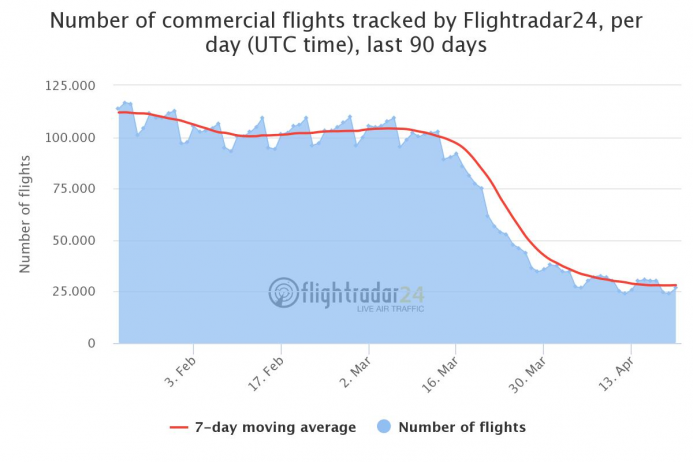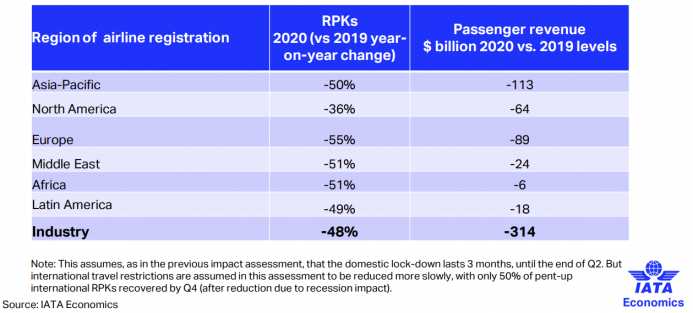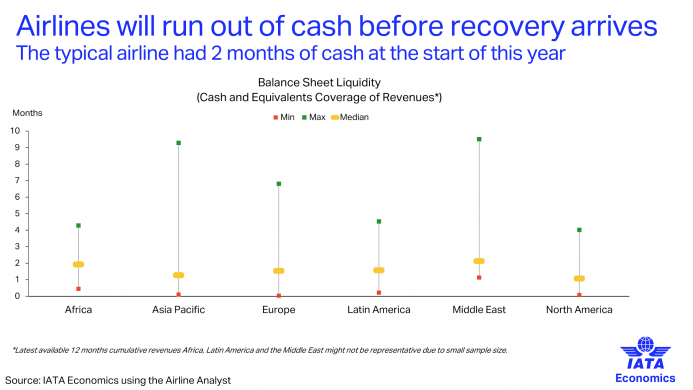The economic impact of the COVID-19 pandemic has reached all productive sectors. The massive spread of the virus and social distancing measures have led to a dramatic decrease in economic activity.
The aviation industry, vital for tourism and business, has been hit hard. Investors and analysts state that this crisis could be worse than the one that followed the SARS outbreak in 2003 and the one after 9/11.
In this article we will describe how the future of airlines looks and explain how bad the current situation is.
The Nonpharmacological Interventions
When a new epidemic emerges and there is no effective medical treatment, governments often implement social distancing measures and travel restrictions to avoid overburdening health systems.
These measures are known as nonpharmacological interventions (NPIs).
Since COVID-19 began to spread around the world, economic activity has declined as a result of NPIs. Although these measures may help contain the virus and prevent the early collapse of health systems, they have an inevitable negative impact on the economy.
When NPIs are implemented, the authors explain, many companies do not have incomes (since they cannot sell their goods and services) but must continue to pay their regular expenses (debts, rent, taxes, salaries, equipment maintenance, etc.). In a recent United Nations Development Programme study, Constantino Hevia and Andrés Neumeyer explain that “many firms experience negative added value because the cost of inputs exceeds gross output.” Thus, long periods of NPI cause bankruptcies (especially in small businesses and those linked to intensive social contact), massive layoffs, and a loss of efficiency in supply chains and production networks, among other effects.
Therefore, we see a huge increase in demand for liquidity. Both families and businesses demand liquid assets to cover their expenses while their incomes temporarily drop. Since businesses have limited liquidity, they are not likely to be able to sustain themselves, and unemployment rises sharply (link).
The Impact on the Airline IndustryThe airline industry necessarily requires intensive social contact and is directly affected by travel restrictions. Therefore, it has been one of the industries that has suffered most from NPIs. According to a Wall Street Journal report, the financial implications of the canceled flights and routes are immense. Statistics from Flightradar24 (Figure 1) show a 73 percent fall in the number of commercial flights per day from the beginning of March to the second half of April. Figure 1. According to the WSJ report cited above, the reduction in global capacity (measured by how many seats are in the air) is greater than the one that followed the 2003 SARS outbreak and even 9/11. The financial forecasts are very discouraging. Alexandre de Juniac, CEO of the International Air Transport Association (IATA), stated in late March that “within a matter of a few weeks, our previous worst case scenario is looking better than our latest estimates.” In an updated analysis published on April 14, the forecasts were even worse. In this last report, the IATA states that full-year passenger demand (measured by revenue passenger kilometers, or RPKs) will decline by 48 percent compared to 2019. Also, they are expecting airline passenger revenues in 2020 to fall by $314 billion, 55 percent in comparison with 2019 (Figure 2). |
Number of commercial flights tracked by Flightradar24 |
Figure 2.From the liquidity aspect, the situation is very complicated. In addition to the unavoidable costs, airlines must refund sold but unused tickets to the tune of $35 billion just for Q2 (quarter 2) as a result of the massive cancellations caused by government-imposed restrictions. Cash burn will be critical. IATA estimates that “airlines could be burning through $61 billion of their cash balances in the second quarter.” And although many governments have already launched relief packages, the question is whether this aid will arrive in time: most airlines started 2020 with enough cash and equivalents for two months (Figure 3). |
Region of airline registration |
| Figure 3.
Layoffs as a result of the shutdowns are already happening. The WSJ report notes that Cathay Pacific and Asiana Airlines have asked thousands of employees to take unpaid leave. Hong Kong Airlines announced that it would lay off four hundred employees, and its president said that it was a matter of survival. According to a CNBC report, Delta Airlines cut capacity by 70 percent, United Airlines by 65 percent, and American Airlines by 50 percent. Norwegian, SAS, and Lufthansa suspended most of their operations, and similar cuts are expected in other airlines. The CEO of American Airlines, Doug Parker, stated that this is the worst crisis in the history of the industry. |
Balance Sheet Liquidity |
Conclusion
In a nutshell, the economic impact of the COVID-19 crisis on the aviation industry is enormous, and the situation could get even worse.
After all, it is not only about the ruin of the airlines or how they will manage to recover (if they survive). The aviation industry represents 3.6 percent of global GDP. Its crisis will have a wide impact on the economy as a whole. Today the industry supports 65.5 million jobs worldwide,1 and 25 million of them are at now at risk.
This is not the time to stop worrying about industries’ performance. The global recession could have more devastating effects than the virus itself, and the example of the airlines put things in perspective.
- 1. Data on the number of jobs the airline industry supports can be found at https://aviationbenefits.org/economic-growth/.
Tags: newsletter
























